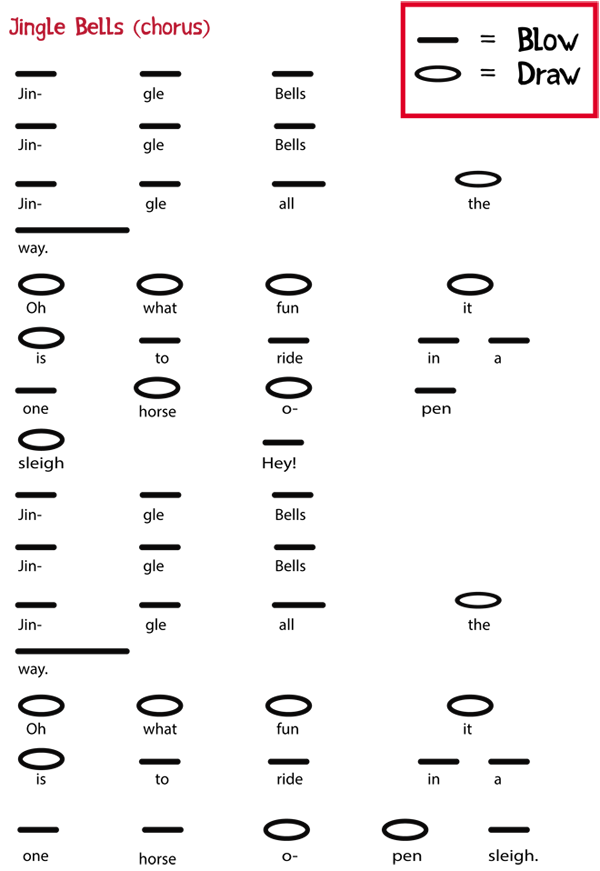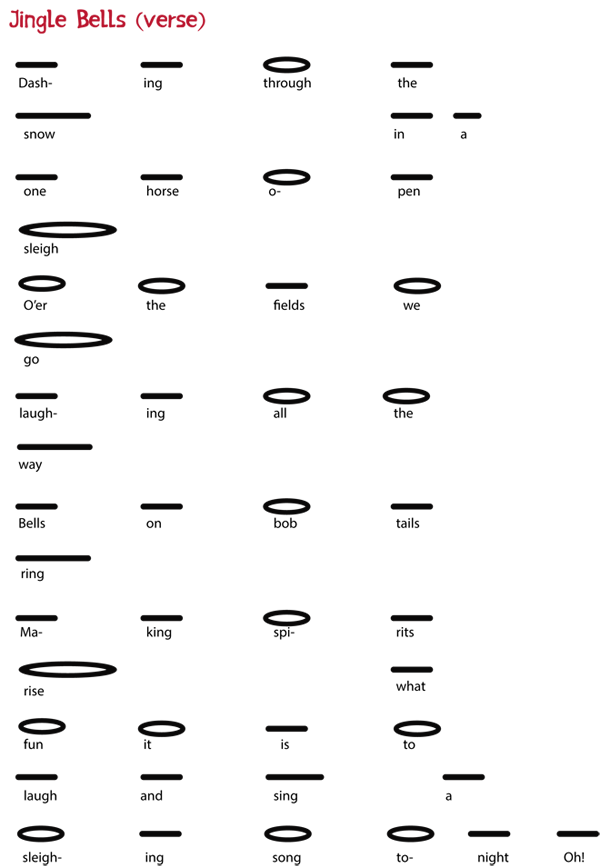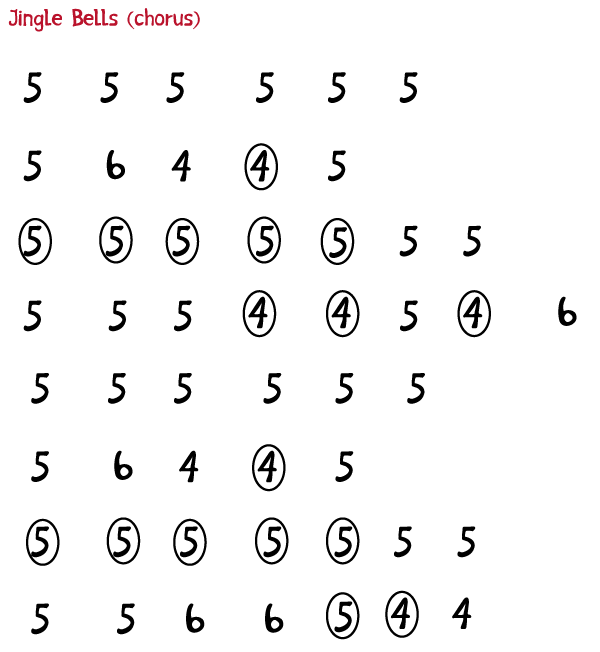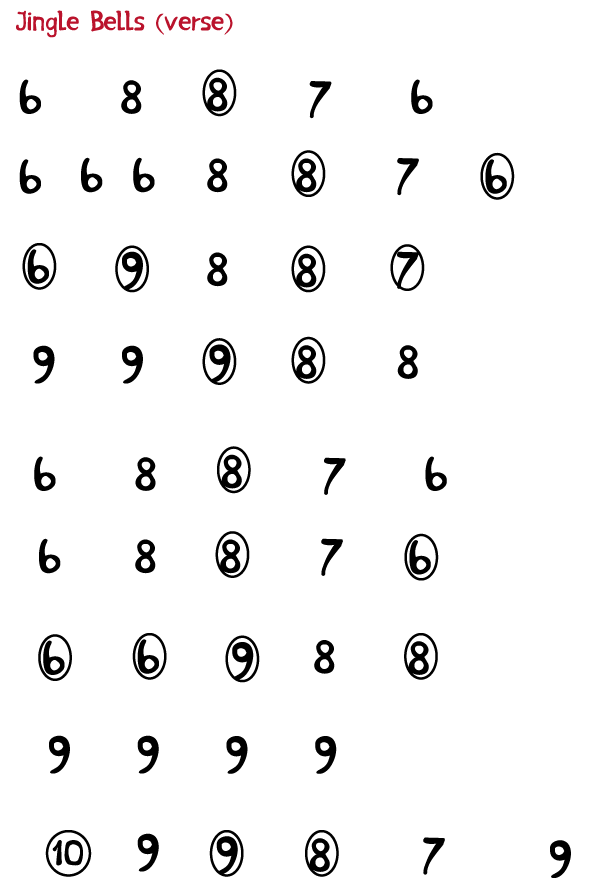
JP Allen at harmonica.com invited me to create a short video to teach the holiday favorite, Jingle Bells. Being the guy that I am, I turned that short video into a 5-part instructional series called “The Five Steps to Jingle Bells.” This free (Youtube) series very simply lays out the Hal Walker method of learning a song. In this blog, we release all 5 steps.
For the last 20 years, I’ve been developing a unique system of harmonica instruction. Unfortunately, I have not had a large enough quantity of “method testers” to confirm whether or not it actually works. Is it just a cool theory or is it a highly effective system for learning to play? That’s what I want to know.
I’ve had thousands of short-term students in elementary schools around Ohio. But to be honest, most kids are not willing to follow through completely with the five steps of learning a song. Would you be willing to give it a try? I’d love your feedback.
These are the 5 Steps to Jingle Bells
- Sing the Song
- Sing the Blow-D-Blows
- Play the Blow-D-Blows
- Play the Messy Octaves
- Play the Single Notes
Step 1 – Sing the Song
This system is based upon my belief that learning to play the harmonica begins with learning to make music with the breath — gaining musical control of that huge dome of a muscle called the thoracic diaphragm.
We begin by playing a wide sound with big chords — pushing and pulling the blows and the draws. After we have experienced the power and the grace of the diaphragm, only then do we begin to think about single notes and “embouchure” (mouth position).
Step 2 – Sing the Blow-D-Blows
For more help with steps 2 and 3, see my harmonica tab system below
Step 3 – Play the Blow-D-Blows


At this point, some of this will sound like gibberish. Well, that’s why I’m here. That’s why I’ve created 5 free videos to walk you through my system of learning any song. I hope you’ll follow the simple instructions and give it a try. Please let me know whether or not it actually works for you.
Whether you’re a beginner, an intermediate or an advanced player, follow along from the beginning and give my theory a real test. I appreciate it. Jump in now.
Step 4 – the Joy of Tongue Blocking
Today, I’m here to ease your way into the world of tongue blocking. In this lesson, I use the song “Jingle Bells” to introduce you to something that I call a “Messy Octave.” Understand this: on a 10-hole harmonica, 2-blow and 5-blow are essentially the “same” note, an “octave” apart. A “messy” octave begins to explore (in a messy way) the idea of closing holes 3 and 4 with your tongue, while allowing holes 2 and 5 to sound. (see illustration)


The only difference between a “wide chord” and a “messy octave” is that the very tip of your tongue is beginning to explore the surface of the harmonica. Have fun. Be patient. Be kind to yourself. It’s gonna be messy at first. Little by slow, say “hello” to the world of tongue blocking!
Step 5 – Mastering the Single Notes
Thanks to the Ohio Arts Council’s TeachArtsOhio program, I am spending every Friday as an “artist-in-residence” at Bucyrus Elementary School in Bucyrus, Ohio. My favorite class is at 1:00 pm when I am teaching the entire 3rd grade to play the harmonica. I’ve been doing this kind of work for almost 20 years, so I feel very confident standing in front of 120 third graders with harmonicas in their hands, but I enjoy learning something new every time.
This work calls upon my whole self. Every week, I take this 45-minute opportunity to tap into the part of myself that is the teacher, the drill sergeant, the musician, the comedian, the uncle, the brother, the spiritual advisor and the kid. I wish you could be there to see these kids get excited about “hand motions”. I wonder if you’re as excited about the hand motions as these kids are.
I hope that you’ve been following along with these 5-steps to learning Jingle Bells. If not, I encourage you to go back and give it a try. I have so much confidence in this method that I believe it will benefit even the intermediate and advanced players among you.
Well… guess what! Now that you’ve sung the song, now that you’ve mastered the hand motions, now that you’ve created real power with the blows and the draws and now that you’ve explored “messy octaves,” you are ready for SINGLE NOTES!!!
In this method, we first learn to use the diaphragm in a musical way – pushing and pulling with big arm motions. Then we explore the surface of the harmonica with the tip of the tongue. The final step is to clean up the messy octave, close the left side of the mouth and direct all that power from the diaphragm into the right side of the mouth. The single note is born.
The illustration below depicts three different ways to play 5-blow.



Take your time. “Spend a day or a week or a month cleaning up those single notes and then spend the rest of your life thanking yourself.”
Using my system of notation, here’s the basic major scale. Remember, a number by itself is blow and a number that is circled is draw. ENJOY! Let me know how it goes. Peace, Hal

Complete Jingle Bells Notation



Comments
Got something to say? Post a comment below.